The photo editing software market size is projected to reach US$ 448.06 million by 2031 from US$ 313.51 million in 2023. The market is expected to register a CAGR of 4.6% in 2023–2031. The presence of facial recognition technology empowered with artificial intelligence is likely to remain a key photo editing software market trend.
Photo Editing Software Market Analysis
The photo editing software market is growing at a rapid pace due to the growing number of internet and smartphone users and the growing demand for digital photographs among consumers. The market is expanding steadily, driven by the increasing need for high-definition quality images from individual and commercial uses. Moreover, the integration of augmented (AR) and virtual reality (VR) technologies in photo editing and the rising usage of computational algorithms in photo editing software are providing lucrative opportunities for market growth.
Photo Editing Software Market Overview
Photo editing software is a digital photo application that allows users to crop, repair, and organize their photos as per requirement. The software can take scanned photographs of old film photography and convert them to digital images. These images are further digitally restored by removing defects and improving image quality. The demand for special effects in photos, including color, tints, image orientation, digital photographs, and layered editing, among others, is fueling the market throughout the forecast period.
Customize This Report To Suit Your Requirement
You will get customization on any report - free of charge - including parts of this report, or country-level analysis, Excel Data pack, as well as avail great offers and discounts for start-ups & universities
Photo Editing Software Market: Strategic Insights
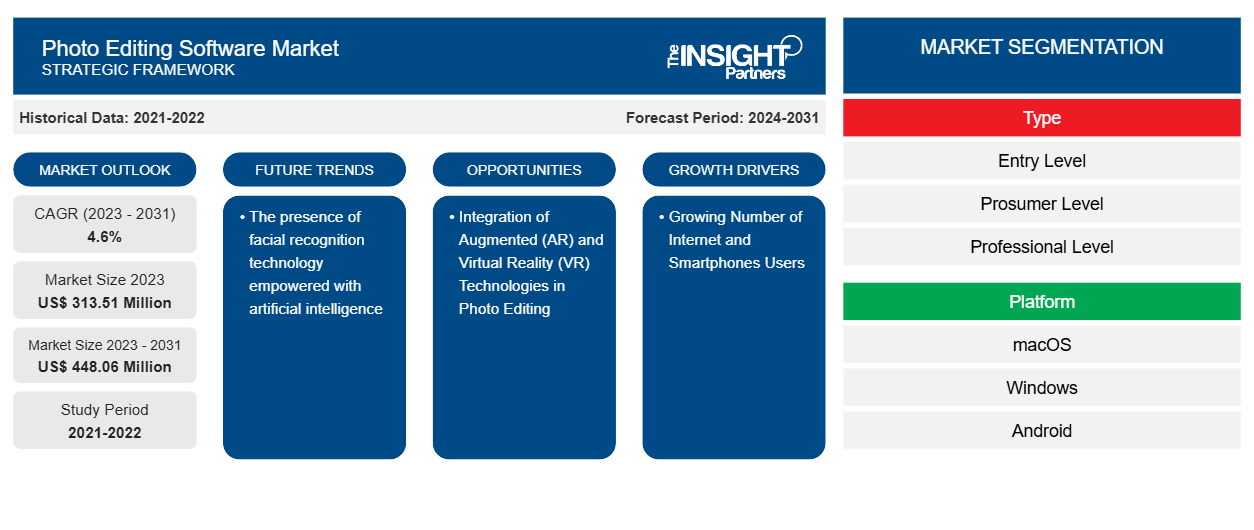
- Get Top Key Market Trends of this report.This FREE sample will include data analysis, ranging from market trends to estimates and forecasts.
You will get customization on any report - free of charge - including parts of this report, or country-level analysis, Excel Data pack, as well as avail great offers and discounts for start-ups & universities
Photo Editing Software Market: Strategic Insights

- Get Top Key Market Trends of this report.This FREE sample will include data analysis, ranging from market trends to estimates and forecasts.
Photo Editing Software Market Drivers and Opportunities
Growing Number of Internet and Smartphones Users is Driving the Market
A growing number of the internet increases the demand for smartphones among consumers across the globe is driving the market. The internet and smartphones are two of the primary factors fueling the market. The growing number of smartphone users is associated with social media influence, surging the demand need for photo editing software among consumers. Moreover, the rising popularity of smartphones encourages market vendors to develop photo editing software specifically designed for smartphones. Smartphone manufacturers are also integrating image editing functions directly into the primary camera app, allowing users to inspect, change, and manage light balance and photo exposure effects of their photos in real-time. Increasing camera capability and processing power of smartphones are driving manufacturers to produce superior mobile picture editing applications, hence fueling the industry.
Integration of Augmented (AR) and Virtual Reality (VR) Technologies in Photo Editing – An Opportunity in the Photo Editing Software Market
The integration of augmented reality and virtual reality technologies in photo editing allows users to apply more realistic effects to acquired images, making them more appealing. Furthermore, the usage of AR and VR technologies provides an exact and realistic picture of the image by enhancing its quality, which increases the demand among consumers and creates opportunities in the market. Moreover, using AR technology in photo editing allows end users to add realistic effects while providing an accurate and realistic image. Furthermore, the advent of more successful depth sensors in smartphone cameras makes it simple to incorporate augmented reality into the photo editing process. Thus, the increasing incorporation of AR and VR technologies in photo editing software is generating significant growth opportunities for the market.
Photo Editing Software Market Report Segmentation Analysis
Key segments that contributed to the derivation of the photo editing software market analysis are type, platform, and end user.
- Based on type, the photo editing software market is divided entry level, prosumer level, and professional level. The prosumer level segment held a larger market share in 2023.
- On the basis of platform, the photo editing software market is divided into macOS, windows, android, and iOS. The windows segment held a larger market share in 2023.
- In terms of end user, the market is categorized as individual and commercial. The commercial segment held a larger market share in 2023.
Photo Editing Software Market Share Analysis by Geography
The geographic scope of the photo editing software market report is mainly divided into five regions: North America, Asia Pacific, Europe, Middle East & Africa, and South America/South & Central America.
In terms of revenue, North America accounted for the largest photo editing software market share. The introduction of social media advertising, the presence of well-known fashion brands, the rise of the online advertising sector, the expansion of the e-commerce industry, and the growth of SMEs are significant factors that have contributed to the regional market's growth. The high rates of internet, modern computer, and smartphone penetration in the US and Canada have produced a favorable atmosphere for the growth of the video streaming industry, which is expected to boost the market in the region.
Photo Editing Software Market Regional Insights
The regional trends and factors influencing the Photo Editing Software Market throughout the forecast period have been thoroughly explained by the analysts at Insight Partners. This section also discusses Photo Editing Software Market segments and geography across North America, Europe, Asia Pacific, Middle East and Africa, and South and Central America.
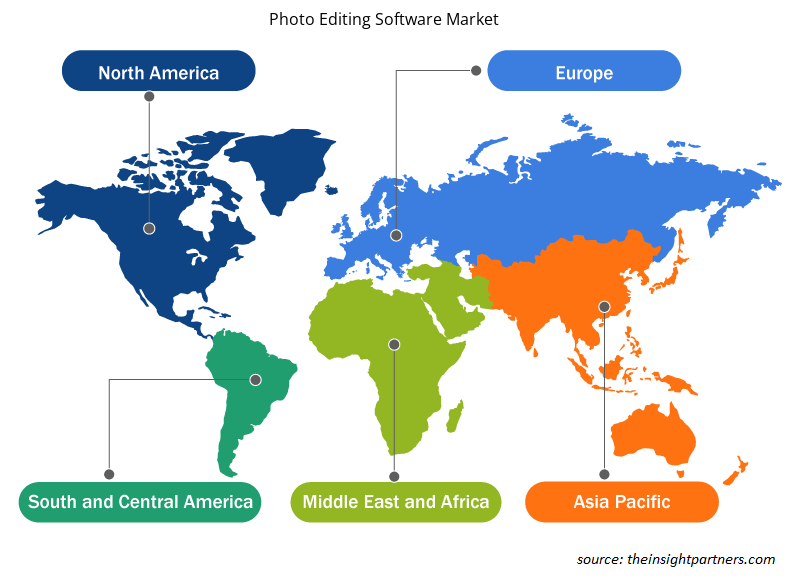
- Get the Regional Specific Data for Photo Editing Software Market
Photo Editing Software Market Report Scope
| Report Attribute | Details |
|---|---|
| Market size in 2023 | US$ 313.51 Million |
| Market Size by 2031 | US$ 448.06 Million |
| Global CAGR (2023 - 2031) | 4.6% |
| Historical Data | 2021-2022 |
| Forecast period | 2024-2031 |
| Segments Covered |
By Type
|
| Regions and Countries Covered | North America
|
| Market leaders and key company profiles |
Photo Editing Software Market Players Density: Understanding Its Impact on Business Dynamics
The Photo Editing Software Market is growing rapidly, driven by increasing end-user demand due to factors such as evolving consumer preferences, technological advancements, and greater awareness of the product's benefits. As demand rises, businesses are expanding their offerings, innovating to meet consumer needs, and capitalizing on emerging trends, which further fuels market growth.
Market players density refers to the distribution of firms or companies operating within a particular market or industry. It indicates how many competitors (market players) are present in a given market space relative to its size or total market value.
Major Companies operating in the Photo Editing Software Market are:
- ACD Systems International Inc.
- Adobe
- CyberLink Corp
- Core Corporation
- DXO
- INMAGINE GROUP
Disclaimer: The companies listed above are not ranked in any particular order.

- Get the Photo Editing Software Market top key players overview
Photo Editing Software Market News and Recent Developments
The photo editing software market is evaluated by gathering qualitative and quantitative data post primary and secondary research, which includes important corporate publications, association data, and databases. The following is a list of developments in the market for photo editing software and strategies:
- In February 2024, DxO announces software support for Canon’s exciting compact 10-18mm RF-S lens and more. The DxO Optics Module library now includes pro equipment from Leica and Hasselblad, as well as new lenses for Nikon, Sony, Fuji, and L-mount users. These DxO Optics Modules and more, can be found within the latest versions of any DxO photo-editing software product. (Source: DxO, Press Release, 2024)
Photo Editing Software Market Report Coverage and Deliverables
The “Photo Editing Software Market Size and Forecast (2021–2031)” report provides a detailed analysis of the market covering below areas:
- Market size and forecast at global, regional, and country levels for all the key market segments covered under the scope
- Market dynamics such as drivers, restraints, and key opportunities
- Key future trends
- Detailed PEST/Porter’s Five Forces and SWOT analysis
- Global and regional market analysis covering key market trends, major players, regulations, and recent market developments
- Industry landscape and competition analysis covering market concentration, heat map analysis, prominent players, and recent developments
- Detailed company profiles
- Historical Analysis (2 Years), Base Year, Forecast (7 Years) with CAGR
- PEST and SWOT Analysis
- Market Size Value / Volume - Global, Regional, Country
- Industry and Competitive Landscape
- Excel Dataset
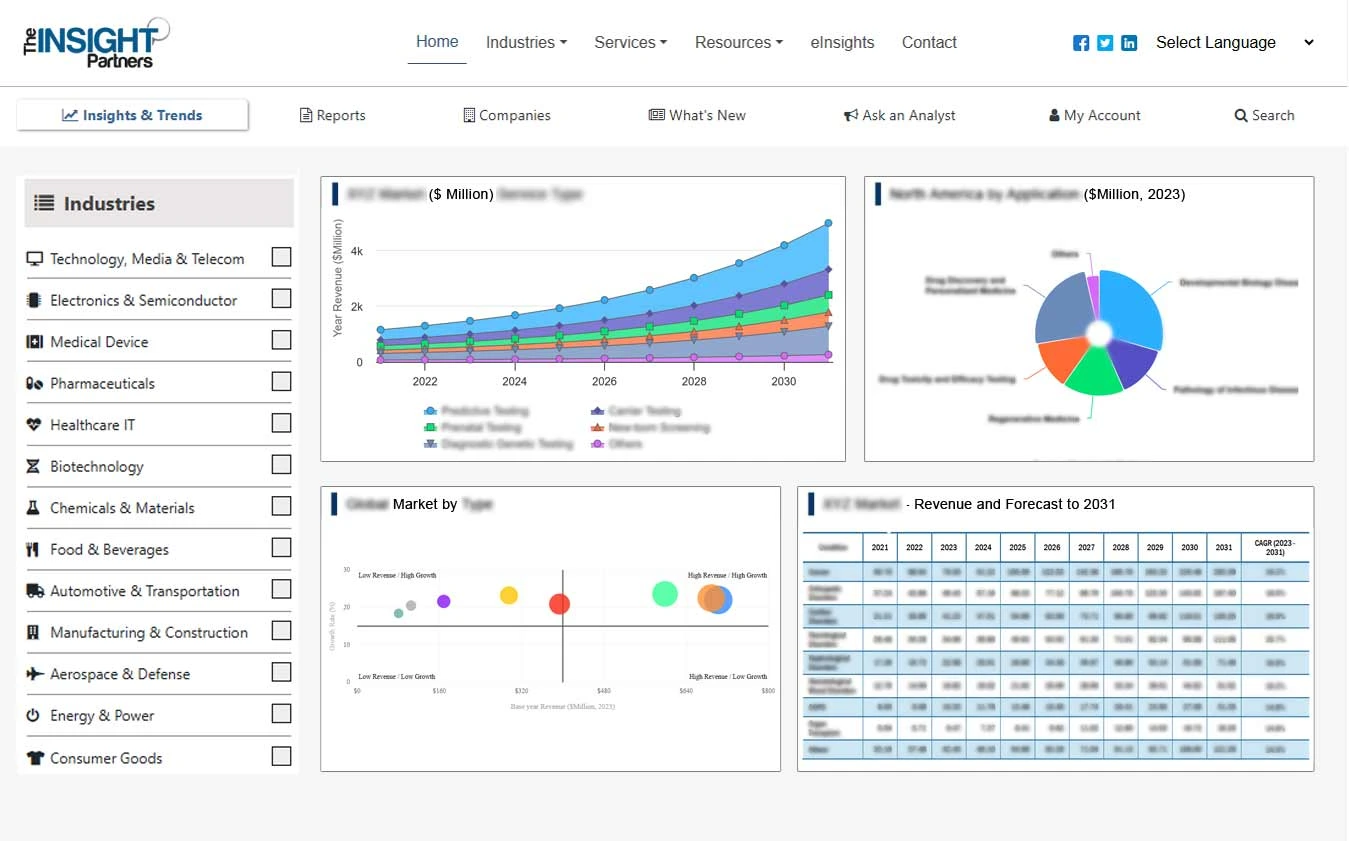
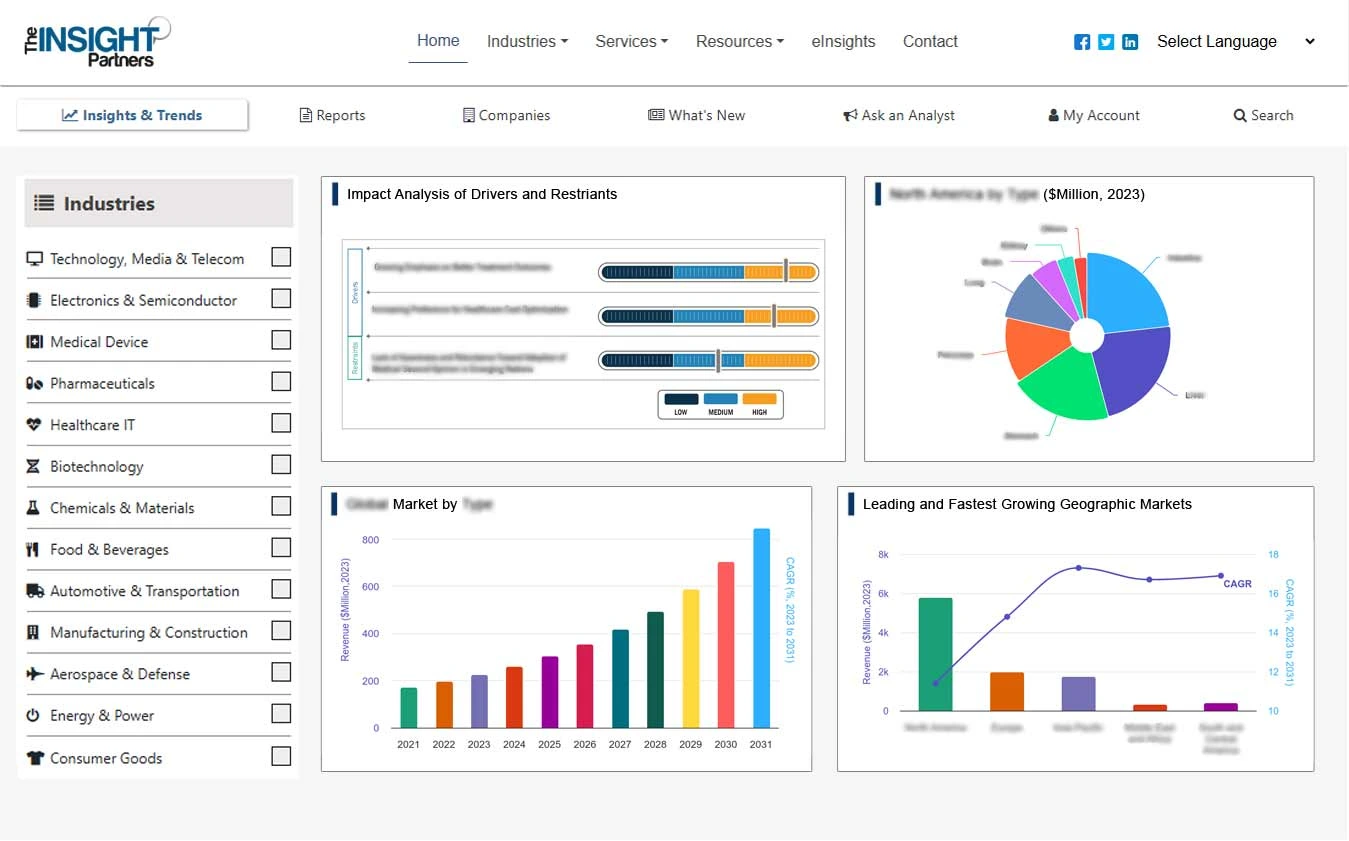
- Advanced Planning and Scheduling Software Market
- Wheat Protein Market
- Greens Powder Market
- Bioremediation Technology and Services Market
- Intraoperative Neuromonitoring Market
- Architecture Software Market
- Analog-to-Digital Converter Market
- Dairy Flavors Market
- Wind Turbine Composites Market
- Toothpaste Market

Report Coverage
Revenue forecast, Company Analysis, Industry landscape, Growth factors, and Trends

Segment Covered
Type ; End User ; Platform ; and Geography

Regional Scope
North America, Europe, Asia Pacific, Middle East & Africa, South & Central America

Country Scope
Argentina, Australia, Brazil, Canada, China, France, Germany, India, Italy, Japan, Mexico, Russian Federation, Saudi Arabia, South Africa, South Korea, United Arab Emirates, United Kingdom, United States
Frequently Asked Questions
What is the estimated market size for the global photo editing software market in 2023?
The global photo editing software market was estimated to be US$ 313.51 million in 2023 and is expected to grow at a CAGR of 4.6% during the forecast period 2023 - 2031.
What are the driving factors impacting the global photo editing software market?
The growing number of internet and smartphone users and the growing demand for digital photographs among consumers are the major factors that propel the global photo editing software market.
What are the future trends of the global photo editing software market?
The presence of facial recognition technology empowered with artificial intelligence to play a significant role in the global photo editing software market in the coming years.
Which are the key players holding the major market share of the global photo editing software market?
The key players holding majority shares in the global photo editing software market are ACD Systems International Inc., Adobe, CyberLink Corp, Core Corporation, and DXO.
What will be the market size of the global photo editing software market by 2031?
The global photo editing software market is expected to reach US$ 448.06 million by 2031.
What is the incremental growth of the global photo editing software market during the forecast period?
The incremental growth expected to be recorded for the global photo editing software market during the forecast period is US$ 134.54 million.
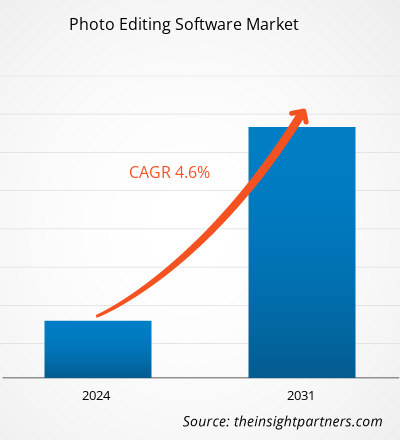
 Get Free Sample For
Get Free Sample For